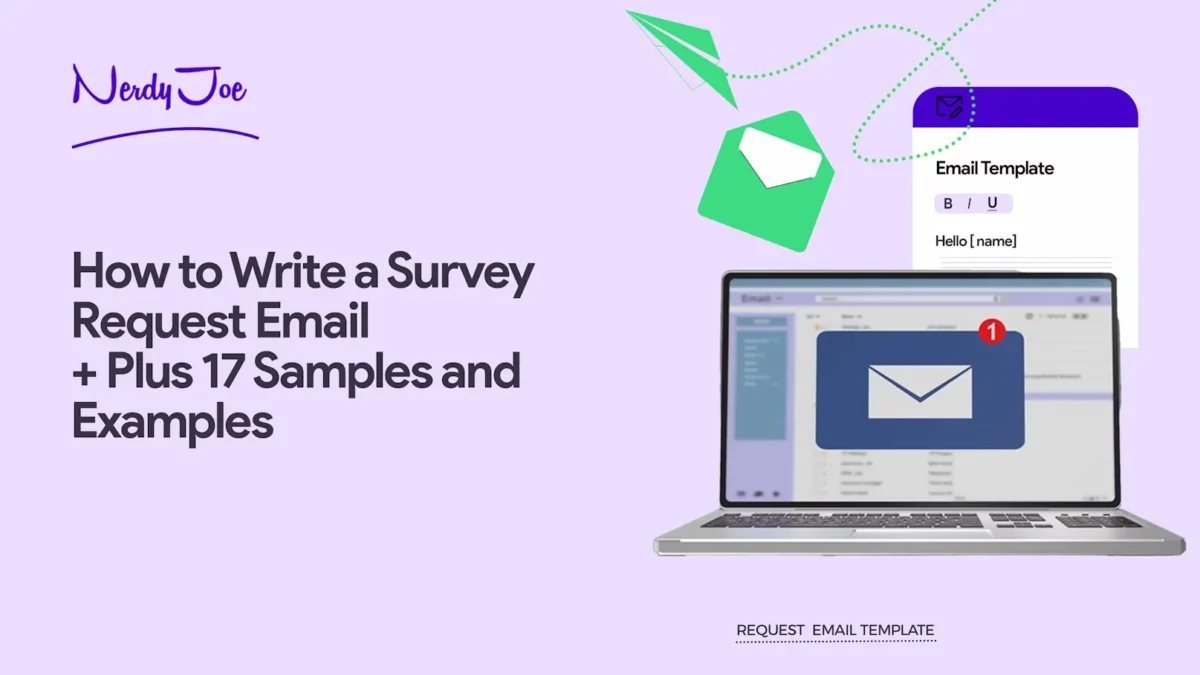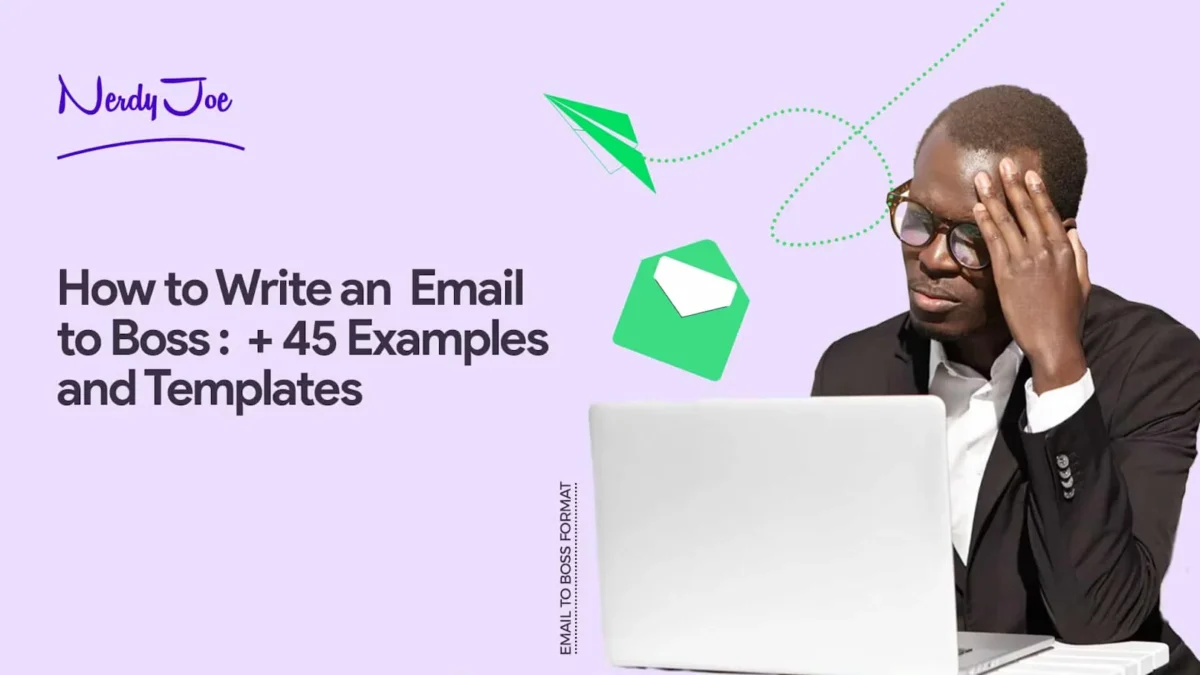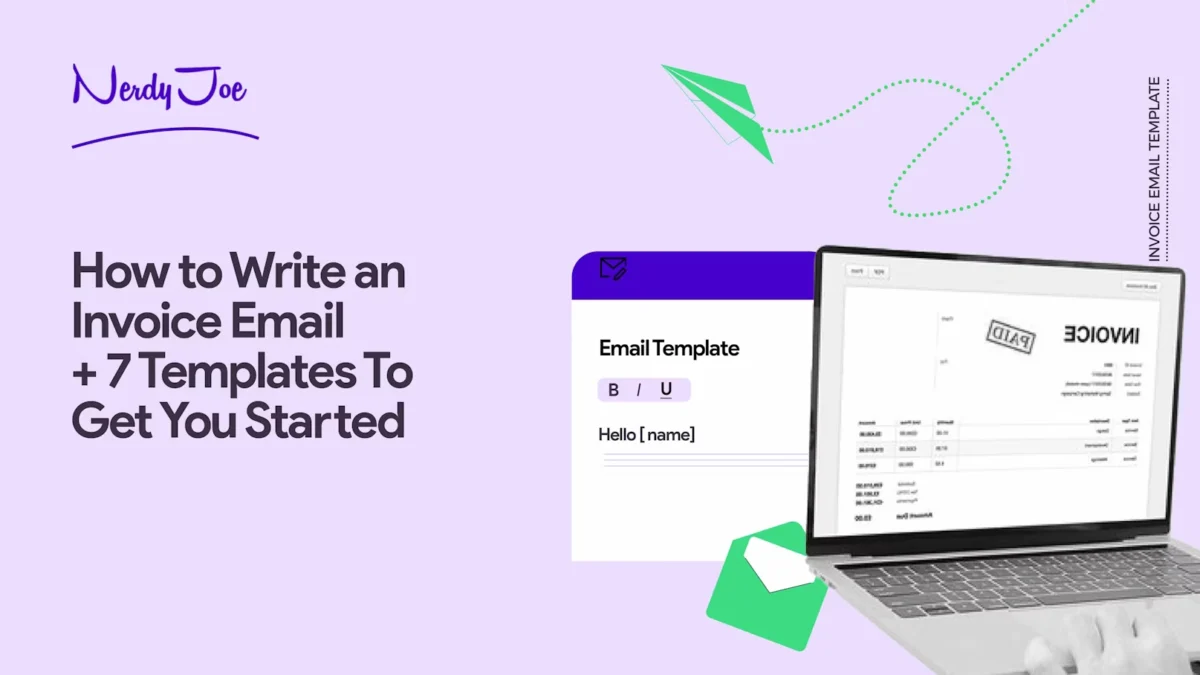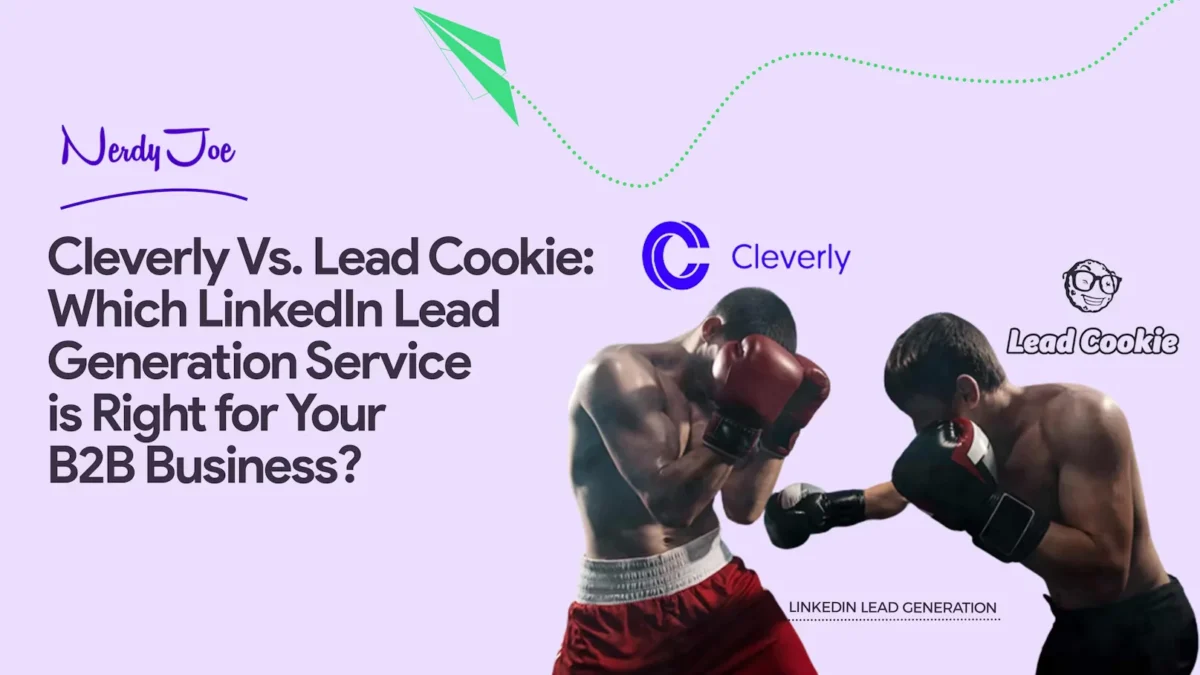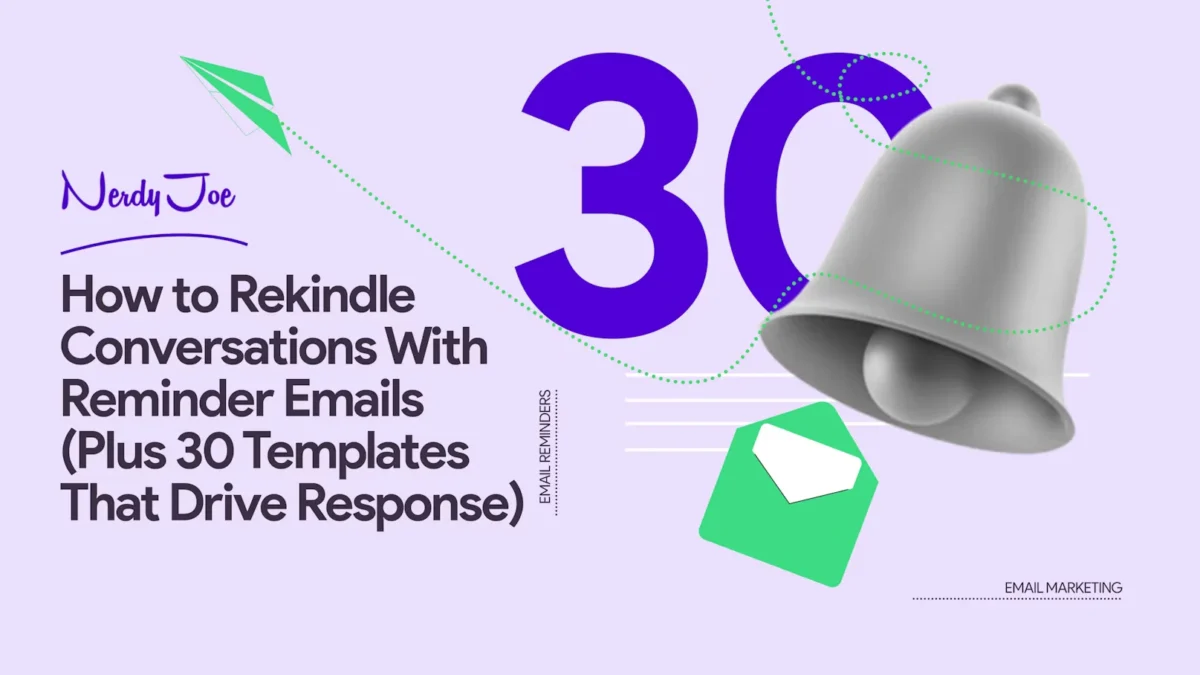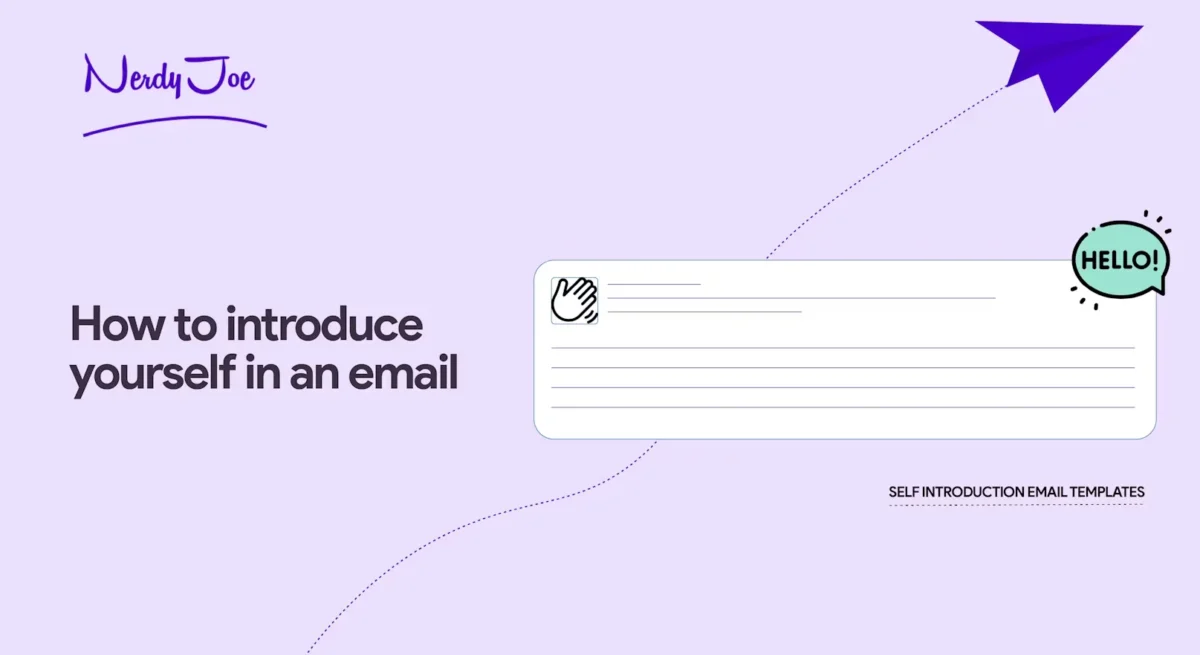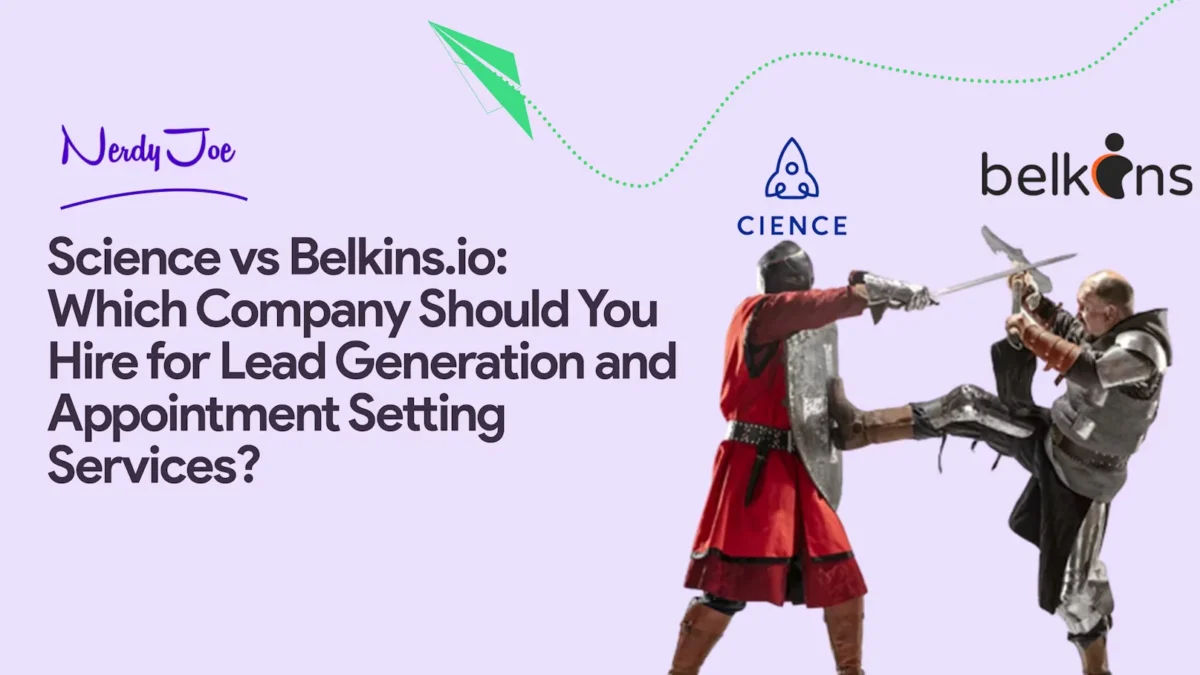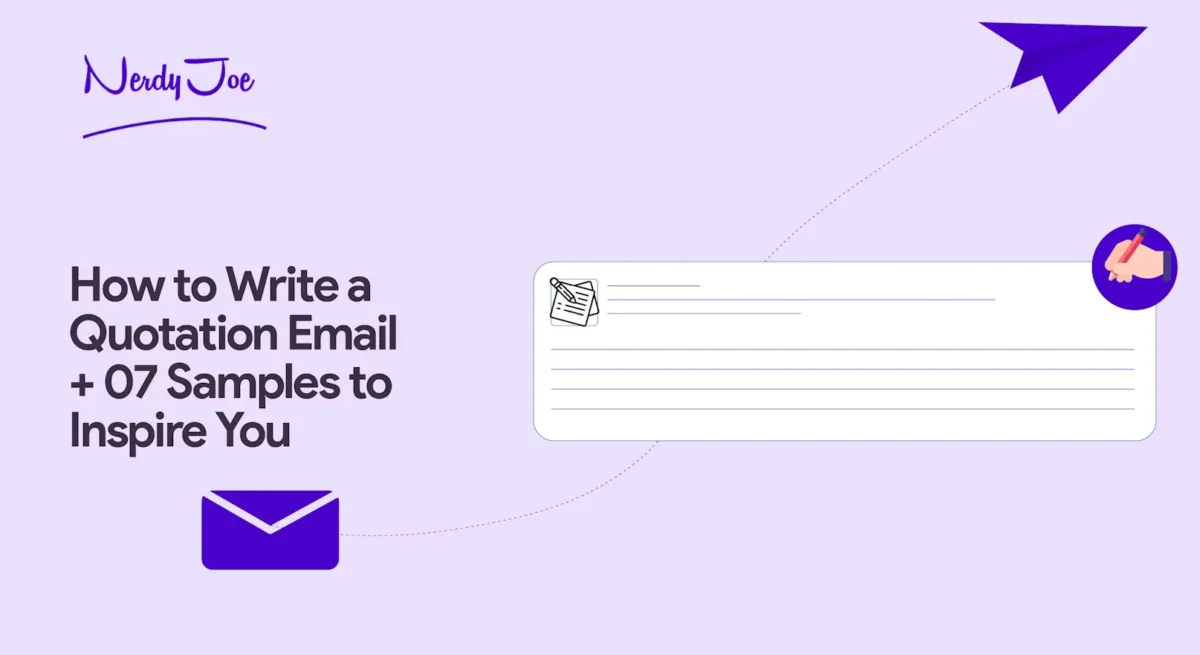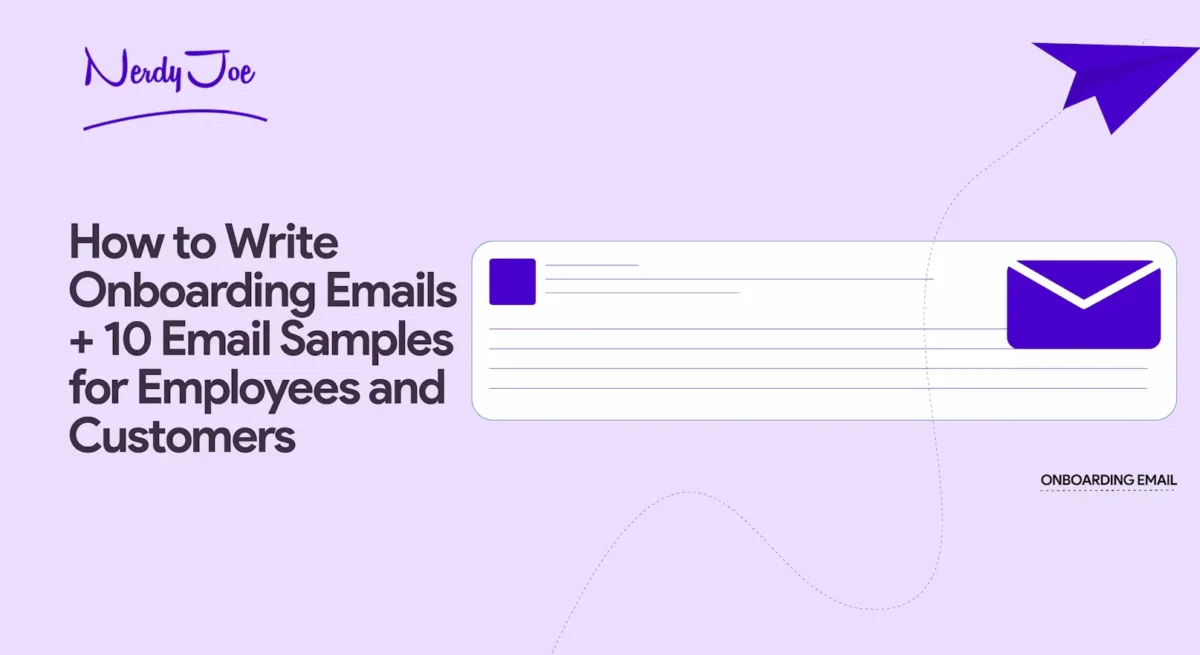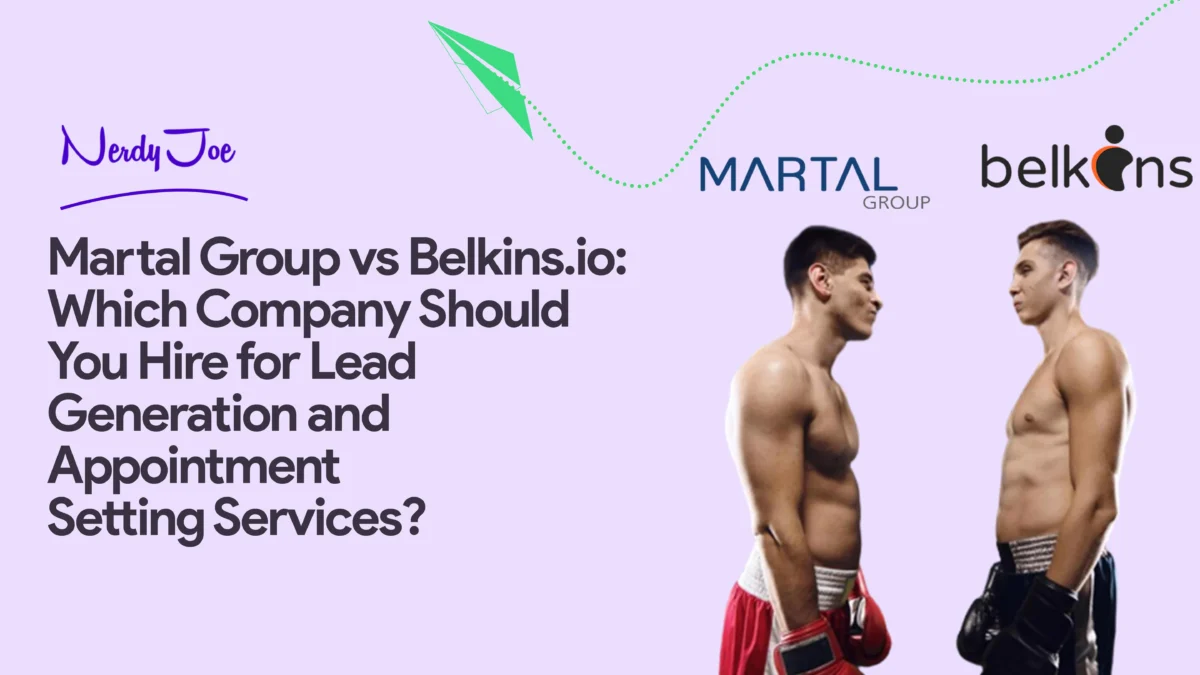How to Write a Survey Request Email With 17 Samples From Experts
If you’re struggling to get people to take your survey, chances are, the problem lies within your survey request email. No matter how perfect your survey is, it won’t matter if people don’t open the invitation email to begin with.
All the data you need is out there, in the minds of your target audience (whether that means your customers, employees, or business stakeholders); you just need to ask the right questions in the right way. And that’s what we are here to help you with.
We’ll teach you how to craft an irresistible survey invitation email that gets opened, read, and acted upon. You’ll also find 17 survey request email samples and survey email examples that’ll easily get you started based on why you need it.
Let’s get started.
Note: Struggling to get replies or book meetings with prospects that fit in your ICP? We’ll help you get 6 SQLs or book 6 meetings with prospects that are ready to buy for only $999/month. Book a 15-minute consultation now.
How to write a survey request email: Key elements to include and survey email format
In business, feedback is power. That’s how you adapt, innovate, and respond to the changing needs and preferences of your customers and business stakeholders alike. And that’s the very reason why survey emails are so darn important.
The main purpose of your survey email is to engage recipients and prompt them to complete your survey. It’s not just a simple invitation; it’s your first (and sometimes only) opportunity to persuade someone to share their opinions, experiences, or insights with you.
But how do you do it and get a response? Well, writing a survey request email is like piecing together a two-cog engine. The first cog is knowing what to include in the email, and the second cog is how to structure the email so that it stands out and engages the recipient.
That said, let’s start by finding out the key elements you need to include in your survey request email.
What to say in a survey request email?
Inviting people to a survey via email and getting a positive response or engagement to your survey is all about asking the right thing the right way, and it starts with knowing what to include in the survey email.
Once you know and understand what to include in the email, all the components naturally fit together. Here are some tips for things you should include in your survey request email:
Purpose of the survey
Right off the bat, recipients should understand why they’re being asked to take part in the survey. So, why? Are you launching a new product? Seeking feedback on a recent event? Aiming to improve customer service?
By clarifying the objective, you show transparency and respect for the respondent’s time, and they will be more likely to grant your request and take a few minutes out of their schedule to take the survey.
Value for the respondents
This is one most survey emails miss. Every survey should offer some form of value to those taking the time to respond.
Even if it’s just the satisfaction of contributing to a bigger cause or improving a product they care about, make sure this value proposition is clearly articulated. Position it as an opportunity for their voice to be heard and help improve the experience they get from your business.
Estimated completion time
Let’s face it, nobody likes drawn-out, endless surveys. Also, you don’t want people to start the survey, find it too long, and decide not to complete it. So, be upfront about how long it will take. Whether it’s “a quick 5-minute survey” or “a detailed 15-minute questionnaire”, give them a clear idea so they can decide when it’s best to proceed.
Embedded survey form
There are a lot of survey tools like SurveyMonkey or TypeForm that allow you to directly embed the survey form into your email. That means that, if possible, your respondents won’t have to click a link to land on another page; they can take the survey right inside the email.
So, if it makes sense for the type of survey you’re inviting them to, make it easy on them and embed the survey form directly within the email. It’ll also help boost your engagement rate.
Confidentiality or anonymity assurances
Data privacy concerns are more significant than ever. If your survey is collecting any form of personal data, or even if it isn’t, it’s essential to reassure respondents. Clearly state how the information will be used, stored, and if applicable, how their anonymity will be preserved.
Incentives or rewards (if feasible)
People love incentives. Whether it’s a discount, a gift card, or entry into a prize draw, incentives can significantly boost response rates. If you’re offering one, make sure it’s relevant and enticing.
A clear call to action (CTA)
Your email should naturally end with your CTA. It’s the prompt, the nudge, the ‘go-ahead’. Whether it’s “Take the Survey” or “Share Your Thoughts,” it should be prominent, ideally with a contrasting button or hyperlink.
An opt-out option
While we all want high participation, it’s also crucial to respect preferences. Always provide a clear and straightforward way for recipients to opt out of future survey requests or communications, ensuring you comply with email marketing laws and best practices.
Now that we have all the key elements sorted out, let’s discuss how you should weave them together to format your email.
Survey request email format
The survey request email format is more than a container for your message; it’s a framework for engagement, designed to facilitate the smooth flow of information and encourage a positive response.
Pretty much, as with most business emails, you need to keep formal and adopt a professional email format. That means your email must contain the following:
- A subject line
- An email body
- An email ending
Now, here is how to write each to ensure they’re effectively set up to drive the most engagement for your survey request.
Survey invitation email subject line
How do you write the best survey invitation email subject lines?
Well, your email subject line needs to be compelling enough to entice your recipient to click and also transparent enough to set proper expectations. As you write it, be specific, use action verbs to let them know you want some action from them, and keep it short.
Here are some survey email subject line examples you can use or learn from:
- “Help us improve your shopping experience.”
- “Quick survey: How are we doing?”
- “Got 5 minutes? We’d love your feedback!”
- “Your opinion matters: Help shape our new product line”
Survey request email body
The body of your email serves to expand upon what the subject line promises. It should provide more details and lead your recipient towards the desired action.
It should address the key elements we discussed earlier: the purpose of the survey, value for the respondents, estimated time for completion, and so on. Here is how to shape it.
- Step 1: Start with a greeting: Personalize the email with the recipient’s name if possible. Hello [name] or Dear [name] are both excellent for this.
- Step 2: Introduce the purpose: Explain why the survey is essential, not just for you but for the recipient as well.
- Step 3: Highlight value proposition: What’s in it for them? Make this clear.
- Step 4: Give details about the completion time: Mention how long it will take and what kind of questions will be asked.
- Step 5: Offer privacy assurance: If you’re collecting sensitive or personal information, assure respondents that their data will be secure.
- Step 6: Offer incentives: If available, mention the reward or incentive for participating.
- Step 7: Call-to-action: Use a bold, contrasting button or a hyperlink to make it obvious what they should do next.
How to end a survey request email
The closing of your survey email should thank the recipient for their time and also include an opt-out option for future communications. Here are the key elements you need to include here:
- Gratitude-based email closing line: Always thank the respondent in advance for their time and effort.
- Opt-out option: Make it clear how recipients can avoid future survey emails if they wish to.
- Email sign-off: Add a professional or formal email sign-off. Good examples include “Best,”; “Best regards,”; “Cheers,”
- Contact information or Signature: End it all with a professional email signature.
17 survey request email samples and examples
Here, we’ll walk you through different survey invitation emails, each catering to a specific purpose, to help you gather the valuable feedback you’re seeking. These are effective survey invitation emails that’ll ensure you get excellent survey response rates for your campaigns.
Generic business feedback survey email sample
A generic business feedback survey email typically gauges the overall sentiment and experience of customers or stakeholders with a company or brand. It provides a broader perspective, touching on various aspects of the business, from products to customer service.
Here is an email sample to get survey responses for this:
Subject line: Help us improve with your feedback!
Dear [first name],
We value your opinion. As a valued member of the [company name] community, your feedback helps us grow and serve you better.
We’d appreciate it if you could take a moment to share your thoughts on your overall experience with us through a short survey. Your insights will influence our future decisions and directions.
[survey link button: Share your thoughts]
Thank you for being an integral part of our journey. We’re eager to hear from you!
Warm regards,
The [company name] Team
Post-event feedback survey email sample
A post-event feedback survey email aims to gather insights on a particular event hosted by the company or organization. This feedback can touch on topics like the event’s content, organization, venue, and overall experience. Here is a survey email example you can use:
Subject line: How was [event name]? Share your experience!
Hello [first name],
Thank you for attending [event name]. We hope you had a memorable experience. As we always aim for improvement, we’d love to hear your thoughts on the event.
Did the sessions meet your expectations? How was the venue? Every detail matters.
[survey link button: Share my experience]
Your feedback will help shape our future events, ensuring they resonate and provide value.
Thanks for making [event name] a success!
Best,
[Your name / Event Team]
Product development survey email sample
A product development survey email is designed to capture customer feedback concerning a potential new product or feature. The survey data here serves to gauge interest, gather suggestions, or identify potential areas of improvement before the full-fledged launch. Here is an email sample for this:
Subject line: Sneak peek! Share your thoughts on our new product.
Hey [first name],
Exciting news! We’re in the process of developing [new product name], and we’d love for you to be a part of its creation. As one of our trusted customers, your feedback is invaluable.
Would you mind taking a few minutes to share your initial thoughts and suggestions?
[Survey link button: View & provide feedback]
Together, we can make [new product name] truly remarkable!
Cheers,
The [company name] Development Team
Employee satisfaction survey email sample
An employee satisfaction survey email helps you target your company’s workforce. It assesses the overall work environment, job satisfaction, growth opportunities, and more, aiming to improve workplace culture and productivity. Here is the perfect email sample for this:
Subject line: Your voice matters! Share your work experience.
Dear [first name],
At [company name], we believe in creating a nurturing and progressive work environment. To achieve this, understanding your experience is crucial.
Please take a moment to share your insights, feelings, and suggestions about working here.
[Survey link button: Start the survey]
Your anonymity and honesty are ensured. Let’s build a better workplace together!
Thank you for your contribution and commitment.
Warm regards,
[HR name / HR Department]
Customer satisfaction survey email sample
The customer feedback survey email has pretty much the same spirit as the employee survey email. So, these are shot email surveys directed at clients to understand their satisfaction levels with your company’s products or services. This feedback is critical for continuous improvement and maintaining brand loyalty.
Here is a survey email template you can emulate here:
Subject line: How are we doing? Your opinion counts!
Hi [first name],
Thank you for choosing [company name]. To ensure we continually exceed your expectations, we’d love to hear about your recent experience with our products/services.
Could you take a few minutes to let us know how we did?
[Survey link button: Rate your experience]
Your feedback drives our innovation and service. Thanks for being a cherished part of our community.
Best wishes,
The [company name] Customer Service Team
Online shopping experience survey email sample
An online shopping experience survey helps sellers understand a customer’s experience during their online shopping journey. It covers elements like site navigation, product assortment, payment process, and more.
The survey results here will help you optimize the eCommerce platform based on real user feedback for a seamless shopping experience. Here is an email sample for this:
Subject line: How was your shopping experience with us?
Hi [first name],
Thank you for choosing [online store name]. As we continually aim to improve, your shopping experience insights are invaluable. From product selection to checkout, your feedback helps us enhance every step.
Please take a moment to share your thoughts.
[Survey link button: Share my shopping experience]
Thanks for helping us make online shopping better for everyone!
Warm regards,
The [online store name] Team
Educational course feedback survey email sample
An educational course feedback survey is designed to gather insights from students about a specific course or program. It can touch upon the curriculum, teaching methods, resources provided, and overall learning experience.
This feedback helps teachers or coaches collect valuable data to refine their course content and delivery. Here is an example of a compelling survey invitation email you can learn from:
Subject line: How was [course name]? We’d love your feedback!
Dear [first name],
Thank you for enrolling in [course name]. To ensure our courses are enriching and meet your learning needs, we’re seeking your feedback.
Please take a few minutes to share your thoughts on the course content, teaching style, and resources.
[Survey link button: Share my course feedback]
Your insights drive educational excellence. Thanks for being a valued learner!
Best,
The [institution name] Team
Website user experience survey email sample
A website user experience survey helps collect feedback about a user’s experience navigating and using a website. It can cover website design, speed, content quality, and overall user-friendliness. The insights from this survey help in refining and optimizing the website.
Here is a survey email template for this:
Subject line: How do you find our website? Share your thoughts!
Hello [first name],
Your online experience with [website name] is of utmost importance to us. We’d love to know how you find our site in terms of navigation, design, and content.
Would you mind sharing your feedback?
[Survey link button: Rate our website]
Your voice will guide our website’s evolution. Thank you for helping us improve!
Cheers,
The [website name] Team
Brand perception survey email sample
A brand perception survey helps businesses understand how consumers view a particular brand. It gauges brand awareness, sentiments, values associated with the brand, and more. This feedback can help in shaping brand strategy and communication. Here is a survey email template for this:
Subject line: What do you think of [brand name]?
Hello [first name],
Your perception shapes our direction. We’re eager to know how you view [brand name] in terms of quality, values, and overall impression.
Can you spare a few minutes to share your perspective?
[Survey link button: Share my brand perception]
Your insights will help us serve you better and uphold the values you cherish.
Thank you,
The [brand name] Team
Post-purchase review request email sample
Post-purchase review requests are sent after a customer has purchased and received a product. The aim is to gather authentic reviews that can help potential customers make informed decisions and also help the business in quality control.
Here is a sample email for this:
Subject line: Loving your new [product name]? Share your thoughts!
Hi [first name],
Thank you for your recent purchase. We hope you’re enjoying [product name]! Reviews from valued customers like you not only help us improve but also guide others in their buying decisions.
Would you mind leaving a quick review?
[Review Link Button: Leave my review]
Thanks for being an integral part of our community!
Warm wishes,
The [company name] Team
Market research survey email sample
Market research surveys help businesses understand market trends, identify customer preferences, and gauge competitive positioning. They can be about a potential product, a market trend, or the brand itself.
Writing this email requires clarity about what specific information is sought and ensuring participants that their input will be valuable and impactful. Here is an email template you can use for this:
Subject line: We need your insight for future innovations!
Dear [first name],
As a valued customer of [company name], your preferences drive our innovations. We’re conducting a market research survey to better understand your needs and current market trends.
Could you spare a few minutes to share your insights?
[Survey link button: Participate in our market research]
Your feedback will play a crucial role in shaping our upcoming products and services.
Thank you for helping us stay ahead of the curve!
Regards,
The [company name] Research Team
Annual company review survey email sample
The annual company review survey is an internal check to gauge employee sentiments regarding the company’s policies, culture, and overall work environment during the past year. It helps in identifying areas of improvement and celebrating successes. The email should emphasize the importance of employee feedback and assure anonymity. Here is a template for this:
Subject line: Your voice matters: Annual company review survey
Hi [first name],
As we reflect on the past year and look forward to the next, your feedback is essential. Help us understand what we’re doing right and where we can improve.
Please take our Annual Company Review Survey:
[Survey link button: Begin the annual review]
Your responses are confidential, and your honesty will drive positive change.
Thank you for your commitment and insights!
Warmly,
The [company name] HR Team
Post-service feedback survey email sample
Post-service feedback surveys help service providers gauge the quality and satisfaction levels of the service rendered from the viewpoint of their customers. Whether it’s for a spa, car maintenance, or legal consultation, this feedback is critical for service improvement.
Here is an email sample for this:
Subject line: How did we do? Share your experience!
Hello [first name],
Thank you for choosing [service name]. We’re always striving to offer top-notch service, and we’d love to hear about your recent experience with us.
Could you take a moment to provide your feedback?
[Survey link button: Rate our service]
Your insights help us serve you better. Thanks for your trust and feedback!
Best wishes,
The [service name] Team
Software user experience survey email sample
Software user experience surveys are designed to understand users’ experiences with a particular software or application, from ease of use to bug reporting. This feedback helps developers improve the software and fix any issues. Here is an email sample you can use to write this survey email:
Subject line: How’s your experience with [software name]?
Hey [first name],
We hope you’re finding [software name] beneficial. As part of our commitment to excellence, we’re seeking your feedback on the software’s user experience, features, and performance.
Could you share your thoughts?
[Survey link button: Share my software experience]
Your insights are paramount in helping us refine and optimize [software name].
Thanks for being a valued user!
Cheers,
The [software name] Development Team
Newsletter feedback survey email sample
Newsletters are an effective medium for brands, institutions, or individuals to share updates, articles, and other curated content with their audience. However, to ensure that the content remains relevant and engaging, it’s essential to regularly gather feedback from subscribers.
When crafting a newsletter feedback survey email, it’s important to emphasize how the recipients’ insights will guide the content and structure of future newsletters, making it more tailored and valuable for them. Here is an example email for this:
Subject line: How are we doing with our newsletter?
Dear [first name],
We cherish having you as part of our newsletter community. As we aim to deliver content that resonates and adds value, we’re keen on hearing your thoughts.
How have you been finding our newsletters?
[Survey link button: Share my newsletter feedback]
Your feedback will shape the direction of our future editions. Thanks for being an integral part of our journey!
Best regards,
The [brand/company name] Newsletter Team
Content preference survey email sample
Understanding audience content preferences gives you a competitive advantage. This survey tells you what types of content resonate most with the audience, whether it’s in terms of format (e.g., video, articles, infographics) or topic.
When writing this email, make it clear that you’re seeking their preferences and that the audience will receive more of the content they enjoy. Here is an email template you can use to write this:
Subject line: What content do you love? Tell us!
Hi [first name],
We want our content to be as delightful and informative as possible. Help us understand what you’d love to see more of!
Which topics intrigue you? Which format do you prefer?
[Survey link button: Share my content preferences]
By sharing your preferences, you’ll help us tailor our content to suit your tastes even better.
Cheers,
The [brand/company name] Content Team
Community/social issue survey email sample
Surveys centered around community or social issues help gather insights and opinions or evaluate awareness on specific societal topics. This could be about local community projects, national policy changes, or global social issues.
Crafting such an email requires sensitivity, ensuring the topic is approached with respect and underlining the importance of the respondents’ opinions in creating meaningful change. Here is an email sample you can use for this:
Subject line: Your thoughts on [specific issue] matter
Hello [first name],
As engaged members of our community, we believe it’s crucial to be informed and share our voices on pressing issues. We’re conducting a survey about [Specific Issue] to understand community sentiments and foster informed discussions.
Can you share your perspective?
[Survey link button: Share my thoughts on [specific issue]]
Your insights are vital in guiding our collective efforts and making a difference.
Thank you for participating and contributing to our community’s discourse.
Warm wishes, survey
[Your name/oganization name]
Key takeaways
- Starting your survey request email with the purpose of the survey not only establishes trust with the recipient but also underscores the importance of their input, making them more likely to participate.
- Always highlight the value for respondents. Whether it’s to improve a product they use, influence community decisions, or refine content they consume, explaining how their feedback will serve your business can enhance participation rates.
- Including an opt-out or unsubscribe option shows respect for the recipient’s preferences and can help in maintaining a positive relationship, even if they choose not to participate in the survey. Also, some recipients will be silent, and your survey answers suffer from this. You can consider a survey invitation reminder email or follow-up to give them a nudge.
- Need help with email marketing and lead generation? We are ready to help. Nerdy Joe can help you get stellar results from our sophisticated email marketing efforts. Talk with us today.
Note: Struggling to get replies or book meetings with prospects that fit in your ICP? We’ll help you get 6 SQLs or book 6 meetings with prospects that are ready to buy for only $999/month. Book a 15-minute consultation now.
